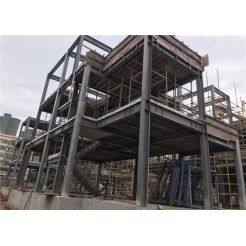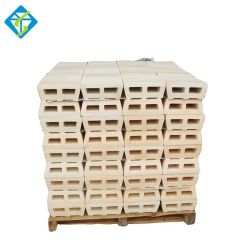EcoGeoX Geotube
Geotube, also known as a titan tube or geotextile tube
Product Description
Geotube, also known as a titan tube or geotextile tube, is a large, tube-shaped bag made of porous, weather-resistant geotextile and filled with a sand slurry, to form an artificial coastal structure such as a breakwaters, dune or levee. Geotextile tubes are a component of the living shorelines approach to coastal management. They are aligned with the shoreline to weaken wave energy and protect against coastal erosion. The tubes facilitate oyster reef development and create areas to dispose of new dredge material. Geotextile tubes are also installed for land reclamation and temporarily installed during the dewatering phase of a dredging operation.
Application of Geotube
Geotube is widely used for embankment in beach protection, jetty, digue, reclaiming land from sea, wetland reconstruction, artificial inland and other construction site.
• pulp and paper industries
• Primary and secondary lagoon cleanout
• Mining and mineral processing to remove railings
• Coal sludge
• Municipal wastewater treatment plants
• Marine remediation
• Power & utility
• Pulp & paper
• Light industrial
• Agriculture including the dairy industry, piggeries, and abattoirs
• Aquaculture
Advantages of Geotube
The geotube containers offer many benefits in various industries. The advantages of geotubes include:
• High flow rate which allows residual to dewater, leaving behind the solids.
• Custom fabricated with seaming techniques that can withstand pressure during pumping operations.
• It can be custom designed and fabricated. It is a specially engineered system through advanced textile technologies.
• It is an excellent solution for revetments, breakwaters, dykes and groynes.
Installation of Geotube
The geotube installation process involves three steps: Filling, Dewatering, and Consolidation.
► Filling
During the filling stage, the dredged material is pumped into the Geotube container. Then, environmentally-safe polymers are introduced into the sludge, which makes the coagulate and the water to separate.
► Dewatering
The clear effluent fluid drains from the Geotube container via small pores of a specially engineered textile. Consequently, you get an effective dewatering and efficient volume reduction of the contained materials. The volume reduction makes room for repeated filling of the Geotube container. With this, most of the solids are captured, and a clear filtrate is collected and recirculated through the system.
► Consolidation
After the final cycle of filling and dewatering, the coagulate is left in the bag and continues to densify as a result of desiccation as the residual water vapor escapes through the fabric. The volume reduction is usually as high as 90%. When the bag is full, the Geotube container and its content can be deposited at a landfill, left on-site, or the coagulate can be removed and land-applied.

The overall geotextile tube performance will also be influenced by factors like the percentage of water content in the media, particle size, the shrinkage when dry, and the soil composition. Welcome to contact us to discuss your projects and get more information of Geomembrane Liner.






